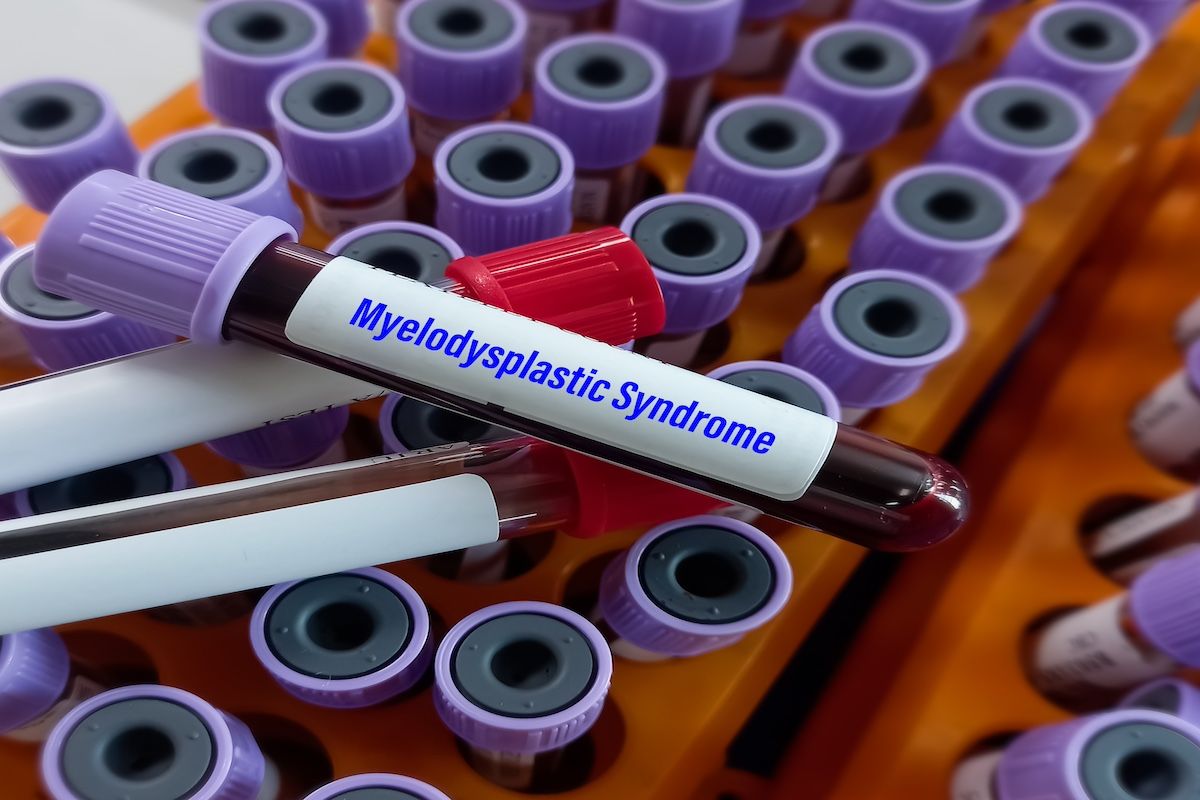Article
Validating a New Scoring System in MDS for the Era of Next-Generation Sequencing
Author(s):
A well-regarded tool for predicting prognosis in myelodysplastic syndromes is updated to incorporate mutations and tested with real-world data.
An abstract and poster presented at the 2023 American Society of Clinical Oncology (ASCO) annual meeting finds that an updated scoring system for evaluating myelodysplastic syndromes (MDS) passes muster at the time of diagnosis, but only works in that limited time frame.1
As explained last year in The Hematologist,2 the International Prognostic Scoring System (IPSS), developed a generation ago to assess prognosis for patients with newly diagnosed MDS, is well regarded; however, this tool had not been adapted to incorporate data on mutations obtained through next-generation sequencing (NGS).
The 2012 version, the IPSS revision (IPSS-R), reflected several changes, including the number and depth of cytopenias, a more involved evaluation of cytogenetic risk, and a bone marrow blast threshold of 2%. The 2012 revision also stratified patients into 5 risk groups instead of 4 and offered more precise prognosis estimates than the first scoring methodology.2
Bernard

Useful as it is, the IPSS-R nonetheless needed an upgrade to reflect the era of precision medicine, and Elsa Bernard, PhD, and her collages did this in a schematic published in NEJM Evidence in June 2022.3 Their Molecular International Prognostic Scoring System (IPSS-M), incorporates mutation data, following a process that interrogated 152 genes associated with myeloid neoplasms. Bernard et al identified 16 genes linked to leukemia-free survival, which they called “main effect” genes, as well as 15 others deemed “residual effect” genes that can affect prognosis if mutations are found in 1 or 2.2
The IPSS-M calculates a risk score for each patient based on their likelihood of survival from acute myeloid leukemia, which can develop from MDS, compared with the average MDS patient. This is a more complex calculation than prior risk scores; patients are assigned to 1 of 6 risk groups, ranging from very low to very high. Bernard et al published an online calculator that allows clinicians to input values and calculate a patient’s risk score.
“To simplify clinical use of the IPSS-M, we developed an open-access Web calculator that accounts for missing values,” they wrote.3
At ASCO, authors from Columbia University Irving Medical Center and Columbia’s Evans Center for Myelodysplastic Syndromes presented results showing their effort to validate the IPSS-M using data from 405 patients with MDS. These patients fit the profile of those who might normally not have complete molecular testing at diagnosis—but in this case, nearly all had at least partial molecular data.
The patients with MDS had documented peripheral blood counts, bone marrow biopsies, and cytogenetic data, which had been identified a tissue bank between July 7, 2010, and March 29, 2022. In addition, 392 patients of these patients had undergone evaluation and received an IPSS-R score. Of this group, 332 had t least 1 follow-up event, and 94 received bone marrow biopsies within a year of diagnosis.
The patient cohort was characteristic of those with MDS: Median age was 74 years (range, 30-96), and the median follow-up duration was 1.5 years (range 0.0-9.9 years).
No patients had PRPF8 mutations. Other mutations included in the IPSS-M scoring were tested in a subset of the study group; the most common seen in this patient population SF3B1 (20.4%), ASXL1 (17.6%), and SRSF2 (15.9%). In addition, 12.2% of patients had the del5q cytogenetic abnormality, and 5.6% were found to have at least one TP53 mutation; 2.7% were TP53 (multi-hit).
Through this process, 29% of the patients saw their IPSS-R upstaged in an IPSS-M score, and while 12% of the patients were downstaged.
Events and prognostic value.At the time of evaluation, there were 84 events, with 61.3% of patients alive at the time of analysis; the median overall survival (OS) was 3.6 years (25%-75% range: 2.75-5.50 years).
In the subset of patients with available bone marrow biopsies, investigators found statistically significant differences in OS between IPSS-M categories (P = .000001) as well as IPSS-R categories (P = .00001). There was no statistical difference in survival between IPSS-M categories (P = .6) or IPSS-R categories (P = .2) following diagnosis, if investigators calculated scores during any point of the patient’s disease.
Investigators concluded, “This study validates the utility of both the IPSS-M and the IPSS-R scoring systems, and notably retains important risk stratification with incomplete diagnostic data.”
However, they noted that “the scoring systems are not effectively prognostic as the disease progresses, and thus should only be utilized at or near the time of diagnosis.”
References
- Chernak B, Ali A, Jan A, Mukherjee S, Jurcic JG, Raza A. External validation of the Molecular International Prognostic Scoring System (IPSS-M) for myelodysplastic syndromes. J Clin Oncol. 2023;41(suppl 16): abstr 7056. doi: 10.1200/JCO.2023.41.16_suppl.7056
- Hasserjian RP. IPSS-M incorporates next-generation sequencing for a new International Prognostic Scoring System. Hematologist. 2022;19(5): https://doi.org/10.1182/hem.V19.5.202259
- Bernard E, Tuechler H, Greenberg PL, et al. Molecular International Prognostic Scoring System for myelodysplastic syndromes. NEJM Evid. 2022;1(7) doi: 10.1056/EVIDoa2200008

NGS-Based Test Accurately Detects Post–Allo-HSCT Relapse in AML, MDS




